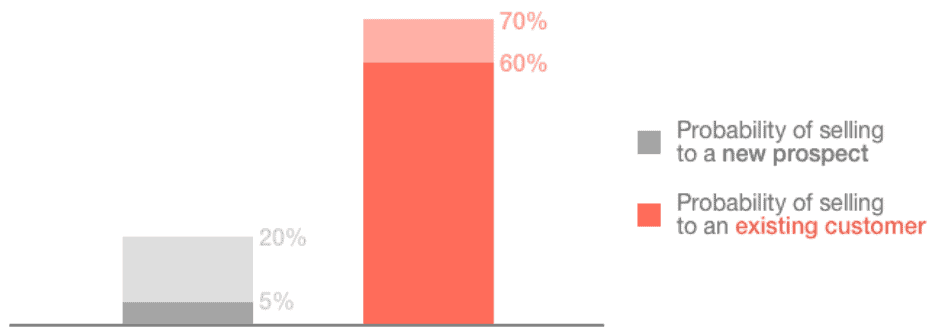
Eric Roth, managing director, consumer, MidOcean Partners
In Part I of this article, we examined the size and disposable income of the boomer+ demographic and how they interact with various marketing channels. In Part II, we will explore the marketing tactics that work with this demographic and cite a few examples of companies that successfully appealed to boomers+ without harming their core businesses.
Tactics that work
- Attitude, not age: First rule: Boomers+ are not “old.” Don’t focus on stereotypical images of aging peers. Most of these consumers still consider themselves young and active. Their values are strikingly like those of younger generations, such as millennials. Today, all consumers, regardless of age, seek self-fulfillment, excitement, travel, health, and wellness. To reach any audience, you must appeal to their root values and motivators. While there are some universal values, to get through to baby boomers and seniors, you must realize that those root values and motivators have changed. Coming of Age says, “that means going beyond targeting them based on generational commonalities and must include targeting them based on their season of life.” These things include spending time with family and focus on practicality. They want to enjoy their lives, and with excess time and money, they are willing to spend to do it. Brands should focus their messaging on spending time with family (especially grandchildren), use emotional images with a mix of an active lifestyle. Enjoying time with family and building a legacy are of grave importance to them.
- Presentation: While they don’t like to be considered old, marketers should not present boomers with the same type of content as their millennial counterparts. Boomers+ appreciate clear-cut, simple messaging. Avoid using multiple images or busy layouts that could confuse them. Employ “no-nonsense” copy with a more formal communication style to go along with an overall design that underscores a singular focus. For example, try a single image that conveys emotions, rather than a collage. When it comes to video content, try slower methodical and detailed approaches. Finally, boomers+ don’t respond to hashtags or colloquialisms, so spell it out, use proper grammar and language they will appreciate.
- Offer value: To convert boomers+ to purchase, they are more likely to need valid reasoning than desire or emotional impulse. According to Keap: “Unlike millennials, boomers+ are far more hesitant to buy things on a whim. They treat each purchase as a commitment. This means they’re far more willing to read the fine print and thoroughly understand all the nitty-gritty details of what they’re getting themselves into before making a purchase.” You will lose them with hidden charges; they require transparency through the purchase funnel. While every generation appreciates a good deal, boomers+ are the most likely to be bargain hunting. According to an Across the Ages report, ~30% of boomers say they only buy clothing when it’s on sale (larger than any other group). But to keep boomers+ loyal, the real value of your product or service, if it meets their needs, is even more critical than a bargain. 77.o% of boomers+ will purchase a product based on its value, says FONA International. If you can effectively communicate your products’ benefits and value, you will position your brands to gain share from this demographic. Consequently, sampling for customer acquisition may work well. Boomers+ react positively to information that proves your product is worth their money. As a result, showcasing clear benefits can help this demographic through the decision-making process.
- Customer-centric model: Boomers+ prefer brick-and-mortar because of their high expectations of customer service. According to a LoyaltyOne survey on generational consumer habits, boomers+ was the most likely demographic to take their business away from retail chains following a subpar exchange with one of their sales associates. This doesn’t just apply to offline channels; brands can take advantage of this online theme. Focus on convenience, communication, and accessibility, boomers+ place a high value on easy access/navigation websites, availability to real representatives, clear return policies. For example, to accommodate boomers+ desire to speak to a human, try replacing your “Buy Now” button with “Call Us To Book/Buy” in email outreach. Boomers+ are some of the most loyal customers once you capture them into the ecosystem. Since they place immense value on excellent customer service, a deeply engaged omnichannel communication is key to driving loyalty among these shoppers, according to SKUlocal.
- Upsell: Boomers+ are prone to upsell due to the more traditional nature of sales. According to author Jeffrey Gitomer, upselling can also help build better relationships with your customers; it’s also much easier to upsell than generate a net-new sale, especially with boomers+. Brands have a significant opportunity to optimize and retain existing files. Critical areas for marketers to pursue are prescription medications, insurance, gifts for grandkids and kids, entertainment, travel, even discount wines by the case.

Source: Wordstream
advertisement - Multimedia: For brands and advertisers that want to keep their ad spending down even though they would like to include television commercials, it is important to supplement their campaigns with cheaper media types like digital and print advertising that allow for a more extended campaign. Russell Johnson & Associates highlights an Interactive Advertising Bureau (IAB) study called Cross-Media Ad Effectiveness. The research shows that multimedia campaigns that combine print, T.V., and digital typically produce the highest Return on Investment and are one of the best ways to advertise to baby boomers effectively. Much like other generations, boomers+ will search for product information online, and through calls and emails.
What’s effective for reaching boomers
- Value and family: T-Mobile’s marketing strategy to baby boomers and tailoring their products to meet their needs may have you questioning whether you understand what consumers ages 55 and above really want in a product. The phone carrier’s leading strategists identified what they believed was the No. 1 feature older adults are looking for when purchasing a phone: the ability to stay connected with family and friends. Their response: Unveil a new data plan targeted toward customers in the 55+ demographic that would allow them to purchase the latest smartphones without some of the added bells and whistles that make some plans expensive, says Creating Results Strategic Marketing.
- Customer-centric: Baby boomers have singled out John Lewis among their favorite brands, which is no small feat considering the department store brand doesn’t target boomers exclusively. A quick look at their website shows that they cater to various demographics, but where they earn points with boomers is for their exemplary staff and service, ease of shopping and clear brand values.
- Multimedia: Geico’s strategy has seen them gain more baby boomer customers than any other insurance company in the past five years. Why? Because they’re targeting boomers on all the channels where they consume media and creating ads that appeal to them. Geico has allocated resources to modern marketing channels, such as digital and more traditional channels, such as print.
- Not all age: A boomer couple feeds Purina’s Bright Mind dog food to Lady, their beloved 10-year-old dog who just isn’t herself due to brain aging. After 30 days, the couple is moved emotionally by Lady’s improvement. She’s more alert, has a brighter look to her eyes, and even wants to learn new things. Purina leveraged two boomer trends—the importance of pets in empty-nester households and boomer’s heightened interest in brain health and performance—to resonate with pet owners of a certain age who are caring for pets of a certain age, according to AARP.
Conclusion
Baby boomers may be just as profitable to your company as millennials. Despite what many marketers often assume, baby boomers are just as likely to buy online. Plus, they tend to spend more on each of their purchases.
- The over-60 consumer is overlooked by most ecommerce retailers but represents a significant opportunity for revenue generation.
- Boomers+ is a loyal customer cohort, which is significant in number and has/spends a large amount of disposable income
- A one-size-fits-all approach to marketing is a waste of effort. You must get more granular than that; you can’t possibly hope to reach an audience through channels and messaging based on large-scale generations. Tailor your messaging to what you know about the individual consumers.
- Cost to acquire and retain customers: Consider how to get the older generations to sample/test your product and maintain loyalty
- Avenues of targeting are essential. Targeting older generations is best done through Facebook and print. When using Facebook, almost all use a desktop vs. their phone)
- Once you’ve figured out an avenue, how can the best appeal to use messaging emphasize proven and tangible quality of your product
- You cannot treat all boomers+ the same way.
Eric Roth is a managing director at MidOcean Partners, a New York-based investment firm, who focuses on the consumer segment. He has nearly two decades of experience in the consumer space, most recently as a managing director and head of the consumer retail group at Lazard Middle Market. Lindsay Picard and Sam Selinger, associates are MidOcean, also assisted with the research and writing of this article.
Favorite